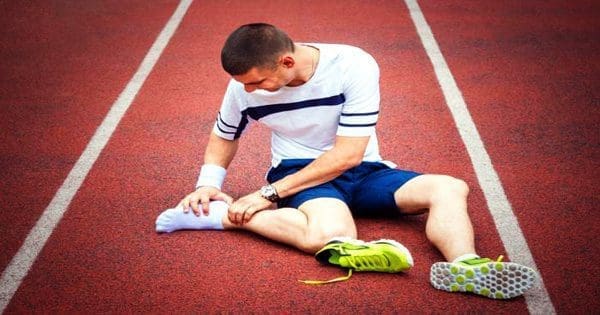From runners to many other types of athletes, experiencing an accident that results in damage or injury, or developing a previous condition is not uncommon among athletes. Subsequently, a majority of athletes practice preventive measures or they stretch and exercise accordingly before performing in their specific sport or physical activity to avoid any injuries which could remove them from training or competition. Heel pain is among one of the most frequent symptoms athletes report from their sessions, especially since the feet are practically essential in most sports and physical activities.
Plantar heel pain is frequently diagnosed by healthcare professionals, including chiropractors and sports clinicians, often recorded due to mechanical, neurologic, traumatic or other systemic conditions. Without a doubt, plantar fasciitis is the most common pathology among sporting environments. However, other causes of heel pain may be previously considered when evaluating an athlete with heel pain.
Up to 2 million Americans describe symptoms of heel pain every year, accounting for an estimate of up to $400 million in medical bills. Regardless, not much is known about the pathophysiology and etiology of plantar heel pain. By emphasizing on the causes of plantar fasciitis as well as discussing other common mechanical issues behind heel pain, including plantar fascia tears/rupture, heel pain of neural origin, calcaneal stress fractures and atrophy of the heel pad, individuals can learn to understand the diagnostic criteria and possible treatment options of plantar heel pain.
Table of Contents
What is Plantar Fasciitis?
The plantar fascia is a fibrous aponeurosis which extends from the calcaneal tuberosity in the heel, to the proximal phalanges in the toe. Plantar fasciitis most commonly occurs as a result of mechanical overload due to either bio-mechanical faults, obesity and work habits.
The plantar fascia functions to support the medial longitudinal arch, acting as a shock absorber, through both passive tensioning of the plantar fascia, known as the Windlass mechanism, and through the active tension of the plantar intrinsic foot muscles, including the flexor hallicus brevis, the adductor hallicus and the plantar interossei, as well as the tibialis posterior. It has been suggested that intrinsic foot muscle weakness can lead to increased loads on the plantar fascia. Because testing the strength of these muscles can be very difficult, researchers have utilized volume estimates of the intrinsic foot muscles and the tibialis posterior muscles to identify whether there’s a distinction in volume between these muscles in people with plantar heel pain. There was no particular difference in the volume of the tibialis posterior and there was only a 5 percent variation in the forefoot volume of the intrinsic foot muscles in comparison with the asymptomatic foot.
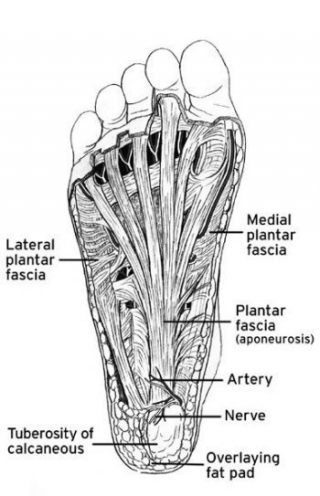
Diagnosing and Evaluating of Plantar Fasciitis
Individuals diagnosed with plantar fasciitis frequently experience symptoms of pain on the first few steps they take in the morning when getting out of bed or after resting for an extended period of time, medically termed as post-static dyskinesia. Tenderness is also generally reported to occur over the origin of the plantar fascia on the medial calcaneal tuberosity. In order to test the integrity of the plantar fascia and the Windlass mechanism, the Jack’s test may be utilized, which involves the passive extension of the first MTP joint, or the metatarsophalangeal joint. It’s been demonstrated that the reduced dorsiflexion range of motion, increased body mass index and poor biomechanics are probable risk factors for plantar fasciitis.
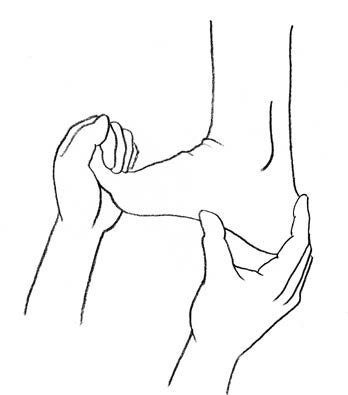
A full biomechanical assessment should be initiated to help determine these risk factors. This would include but should not be limited to: midtarsal, subtalar and ankle range of motion, calf flexibility, gait evaluation and footwear inspection.
Often, healthcare professionals diagnose the presence or absence of calcaneal spurs through the use of ultrasound, although weight bearing radiographs may also be effective to determine the height of the calcaneal fat pad. In the case of plantar fasciitis, evaluations utilize ultrasound at the proximal insertion of the plantar fascia to identify whether there was a fascial thickening greater than 4 to 5 mm, deceased echogenicity and/or perifascial effusions may occasionally be diagnosed.
Several healthcare professionals who specialize in the diagnosis and treatment of sports injuries and conditions, can effectively determine the cause behind an individual’s plantar heel pain. Chiropractic care focuses on restoring and maintaining the overall health of the body, primarily focusing on the spine and its surrounding structures. When it comes to plantar fasciitis and the onset of plantar heel pain, a chiropractor can help diagnose the origin of the individual’s symptoms to properly develop an effective measure of treatment to follow. Chiropractic treatment generally consists of mobilization and myofascial release techniques and massages to relieve pain and discomfort from muscle tissues along with other surrounding structures associated with plantar heel pain and plantar fasciitis.
An infracalcaneal spur may occasionally be present as these have also been found in asymptomatic individuals and removing the spur won’t add to the success of surgery to heal plantar heel pain, if considered. Thickening of the plantar enthesis has also been associated with a reduction in energy dissipation ratio of the calcaneal fat pad which may further increase plantar fascia load.
Treatment for Heel Pain
The Heel Pain Committee of the American College of Foot and Ankle Surgeons, concluded there were three tiers of treatment modalities for plantar fasciitis. They declared that Tier 1 treatment options must first be established, including: padding and strapping of the foot, stretches and exercises of the calf and foot, home cryotherapy, avoiding walking on flat shoes or barefoot, over-the-counter arch supports/heel cups, oral anti-inflammatories, corticosteroid injections and weight loss.
If no reaction was recognized after six weeks of treatment, then, Tier 2 based treatment options must be started while continuing Tier 1 treatments. Tier 2 treatment options include: night splints, further injections, immobilization and prescription orthotics. The combination of using foot orthotics and dorsiflexion night splints has been demonstrated to be more effective than the utilization of orthotics alone. Following these suggestions, 85 to 90 percent of individuals respond to treatment within 8 to 12 weeks and experience full recovery by one year. The Tier 3 treatment option described refers to surgery, which should solely be considered for individuals who failed Tier 1 and Tier 2 treatment option pathways.
With regard to plantar fasciitis, corticosteroid is the traditional injection of choice, but, evidence and research studies have revealed that there only serve as a temporal, short-term relief option. Other risk factors have also been associated with corticosteroid injections, including poor, long-term outcomes such as fat pad atrophy, osteomyelitis of the calcaneus and iatrogenic ruptures. Platelet rich plasma, or PRP, the concentration of platelets derived from the plasma portion of autologous blood, including growth factors, has also been tested as a possible treatment option for plantar fasciitis. Researchers compared corticosteroid injections and platelet rich plasma, concluding identical results within three weeks and six months, approximately a 50 percent drop in VAS scores, claiming that considering the risk components related with corticosteroid injections and platelet rich plasma could be a preferred treatment option. Other researchers compared botulinum toxin type A, or botox, with corticosteroid injections, or CSI, and concluded that the botox group was reported slightly better results at one month while showing considerably better results than the CSI group at both six and twelve months.
Exercise to Avoid Developing Plantar Fasciitis
Tears and Ruptures of the Plantar Fascia
Generally, acute plantar fascia strains occur commonly during sports and physical activities. Frequently, if these happen in isolation, the injury may respond relatively quickly to treatment. These are regularly associated with plantar fasciitis, specifically if a corticosteroid injection has been previously tested on the individual. Athletes with an acute tear report feeling heel pain along with tenderness over the region of the plantar fascia. A palpable lump may be present if a partial or complete rupture occurs. Individuals with considerable tears often report feeling pain upon weight-bearing. Initially involving a non-weight-bearing boot, treatment is generally symptomatic and its combined with progressive weight-bearing along with supportive taping and/or orthotics according to the symptoms.
Heel Pain Symptoms Caused by Nerve Complications
Approximately 15 to 20 percent of individuals experiencing plantar heel pain can attribute their symptoms to impingement or compression of the tibial nerve branches. The most common cause of plantar heel pain caused by nerve complications involves the entrapment of the first branch of the lateral plantar nerve. This nerve can become pinched at three potential sites: first, it can become entrapped where the nerve passes at the sharp edge of the abductor hallucis; second, it can become entrapped just distal to the medial edge of the calcaneus; and last, it can become entrapped due to compression from the abductor hallucis and the quadratus plantae muscles.
The second most common cause of heel pain as a result of neural complications involves the impingement or compression of the medial calcaneal nerve which runs through the heel fat pad and superficial tissues overlapping the inferior calcaneum. A majority of the branches of this nerve can be found running through the superficial intrinsic muscles of the foot, making them less probable to be entrapped within these muscles, however, they may be irritated following heel pad atrophy. Compression or impingement of the medial plantar nerve, which innervates some of the intrinsic muscles of the foot, has been previously diagnosed but is considered rare in isolation.
Diagnosis and Evaluation of Nerve Injury Heel Pain
Individuals with plantar heel pain originating as a result of neural issues commonly describe their pain as sharp, shooting, electric or shock-like pain which radiates either proximally or distally along the length of the nerve. As with plantar fasciitis, the pain can generally worsen over periods of rest but may also occur at rest and in non-weight-bearing positions. Although paresthesia or anesthesia are uncommon, it’s commonly described around the medial or plantar surfaces of the heel. On physical examination, nerve compression or impingement should be suspected if the site of maximal tenderness is found over the nerve.
Neurodynamic assessments can help properly diagnose whether nerve complications can be associated with an individual’s plantar heel pain. Modified straight leg evaluations with added dorsiflexion, eversion and toe extension can increase tension along the tibial nerve, when hip flexion is added, no further loading on the plantar fascia was noted. Adding hip flexion can help differentiate the plantar fascia and the tibial nerve.
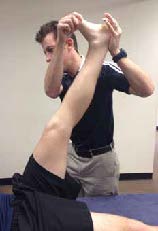
Treatment for Nerve Injury Foot Complications
Current research suggests that the treatment for plantar heel pain resulting from neurological complications should be similar in nature to that for plantar fasciitis. Nonetheless, the lack of specific treatment option alternatives to treat the various presentations of heel pain is believed to be one of the reasons why plantar heel pain may not respond positively to treatment. Researchers have proposed that interface work and nerve gliding or sliding exercises recommended by healthcare professionals such as chiropractors or sports specialists, may be useful to treat and prevent further impingement or compression of these tissues. Further studies must be done to determine the most effective treatment for these nerve entrapment syndromes of the foot.
Fat Pad Atrophy and/or Contusion
The calcaneal fat pad is made up of elastic fibrous tissue and closely arranged fat cells which function as a shock absorber on heel strike. This condition is commonly associated with plantar fasciitis, although, it can occur entirely on its own. Individuals with fat pad atrophy describe feeling their symptoms of pain worsen with walking, especially in hard shoes or on hard surfaces. The pain generally occurs around the fat without any symptoms of tenderness over the medial calcaneal tuberosity. Commonly as a result of the heel strike pattern, pain often develops over the lateral aspect of the heel, helping to differentiate it apart from plantar fasciitis. MRI is the modality of choice utilized to diagnose a fat pad pathology, demonstrated by decreased signals on T1 weighted images and increased signals on T2 images. Treatment involves decreasing compressive load against the fat pad which may include taping, silicone gel heel cups and orthotics.
Stress Fractures of the Calcaneum
Calcaneum stress fractures are relatively frequent, commonly occurring along the upper posterior margin of the os calcis or adjacent to the medial calcaneal tuberosity. These fractures should be premeditated in runners, jumpers, dancers or military service members. Individuals or athletes with a calcaneal stress fracture generally describe feeling symptoms of heel pain, which unlike other plantar fasciitis instances, symptoms usually worsen with activity. On palpation, tenderness can be felt over the medial and/or lateral aspect of the calcaneum and pain will be reproduced by the squeeze test. A simple X-ray or MRI may be utilized to confirm the diagnosis.
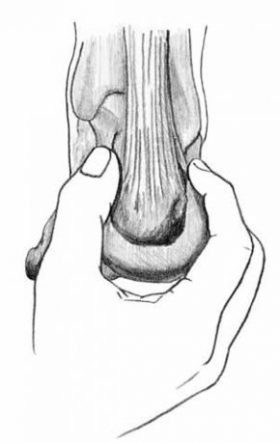
Finally, treatment of calcaneal stress fractures involves a period of non-weight-bearing rest until the pain resolves. Walking and a progressive return to activity may be allowed after the use of soft heel pads alongside training exercises to improve the individual’s biomechanics.
Furthermore, when assessing individuals or athletes with plantar heel pain, several pathologies should be considered and properly assessed or evaluated to determine the presence of a specific injury and/or condition, in order to direct treatments towards preventing pain and other symptoms, making sure to address potential predisposing factors.
Maintaining an athlete’s overall health and wellness is essential in order to prevent them from missing out on training or competition. Because the feet are some of the most utilized parts of the body during sports and physical activities, even everyday habits, an injury or aggravated condition must be avoided for the athlete’s optimal performance. However, when an injury or condition affecting the heel occurs, such as plantar fasciitis, chiropractic care can be a safe and effective alternative form of treatment to relieve the symptoms of pain and discomfort the athlete may have.
For more information, please feel free to ask Dr. Jimenez or contact us at 915-850-0900 .
Sourced through Scoop.it from: www.elpasobackclinic.com
By Dr. Alex Jimenez

TRENDING TOPIC: EXTRA EXTRA: New PUSH 24/7®? Fitness Center
Post Disclaimer
Professional Scope of Practice *
The information on this blog site is not intended to replace a one-on-one relationship with a qualified healthcare professional or licensed physician and is not medical advice. We encourage you to make healthcare decisions based on your research and partnership with a qualified healthcare professional.
Blog Information & Scope Discussions
Welcome to El Paso's Premier Wellness and Injury Care Clinic & Wellness Blog, where Dr. Alex Jimenez, DC, FNP-C, a board-certified Family Practice Nurse Practitioner (FNP-BC) and Chiropractor (DC), presents insights on how our team is dedicated to holistic healing and personalized care. Our practice aligns with evidence-based treatment protocols inspired by integrative medicine principles, similar to those found on this site and our family practice-based chiromed.com site, focusing on restoring health naturally for patients of all ages.
Our areas of chiropractic practice include Wellness & Nutrition, Chronic Pain, Personal Injury, Auto Accident Care, Work Injuries, Back Injury, Low Back Pain, Neck Pain, Migraine Headaches, Sports Injuries, Severe Sciatica, Scoliosis, Complex Herniated Discs, Fibromyalgia, Chronic Pain, Complex Injuries, Stress Management, Functional Medicine Treatments, and in-scope care protocols.
Our information scope is limited to chiropractic, musculoskeletal, physical medicine, wellness, contributing etiological viscerosomatic disturbances within clinical presentations, associated somato-visceral reflex clinical dynamics, subluxation complexes, sensitive health issues, and functional medicine articles, topics, and discussions.
We provide and present clinical collaboration with specialists from various disciplines. Each specialist is governed by their professional scope of practice and their jurisdiction of licensure. We use functional health & wellness protocols to treat and support care for the injuries or disorders of the musculoskeletal system.
Our videos, posts, topics, subjects, and insights cover clinical matters and issues that relate to and directly or indirectly support our clinical scope of practice.*
Our office has made a reasonable effort to provide supportive citations and has identified relevant research studies that support our posts. We provide copies of supporting research studies available to regulatory boards and the public upon request.
We understand that we cover matters that require an additional explanation of how they may assist in a particular care plan or treatment protocol; therefore, to discuss the subject matter above further, please feel free to ask Dr. Alex Jimenez, DC, APRN, FNP-BC, or contact us at 915-850-0900.
We are here to help you and your family.
Blessings
Dr. Alex Jimenez DC, MSACP, APRN, FNP-BC*, CCST, IFMCP, CFMP, ATN
email: coach@elpasofunctionalmedicine.com
Licensed as a Doctor of Chiropractic (DC) in Texas & New Mexico*
Texas DC License # TX5807
New Mexico DC License # NM-DC2182
Licensed as a Registered Nurse (RN*) in Texas & Multistate
Texas RN License # 1191402
ANCC FNP-BC: Board Certified Nurse Practitioner*
Compact Status: Multi-State License: Authorized to Practice in 40 States*
Graduate with Honors: ICHS: MSN-FNP (Family Nurse Practitioner Program)
Degree Granted. Master's in Family Practice MSN Diploma (Cum Laude)
Dr. Alex Jimenez, DC, APRN, FNP-BC*, CFMP, IFMCP, ATN, CCST
My Digital Business Card


